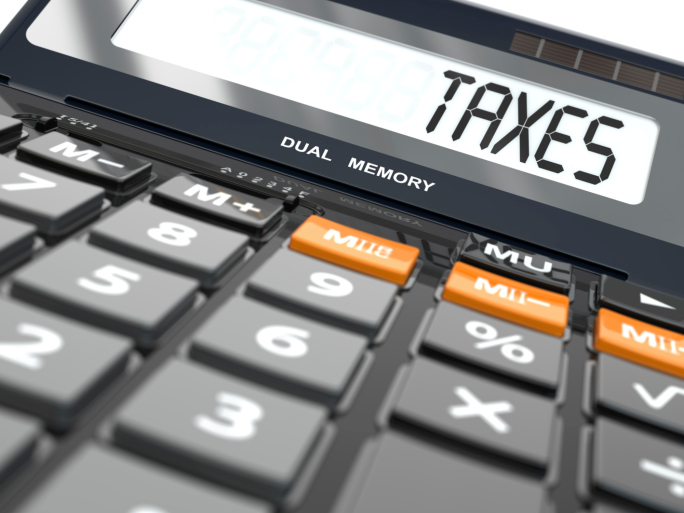High-income taxpayers pay the most tax, so they have the most to gain from taking advantage of lucrative tax breaks. Using favorable tax provisions can save those making $100,000 or more a huge amount at tax time.
Many tax breaks are designed for low- and middle-income Americans to take full advantage, and phase-out provisions prevent those with higher incomes from using them. However, the following tax breaks are available to taxpayers earning $100,000 or more, and they can cut your tax bill more than you might expect.
Contributing to your 401(k) at work
For most people, the biggest potential reduction in your taxable income comes from making contributions to a 401(k) or other employer-sponsored retirement plan. For 2016, you can set aside $18,000 in a 401(k) if you're younger than age 50, and $24,000 if you're 50 or older. The higher your income, the greater the value of setting that money aside on a tax-deferred basis, because the money that you're sheltering from current taxation would ordinarily get taxed at a higher tax bracket you're your lower-income counterparts would pay.
Sometimes, the anti-discrimination provisions of 401(k) law prevent wealthy workers from contributing the maximum. Average contributions among those considered highly compensated employees can't exceed the overall average contributions by more than a set amount, and so if other workers don't participate enough, then those seeking to max out their 401(k)s might not be able to do so. Most 401(k)s pass the anti-discrimination tests, but they're still a trap that can affect some highly compensated workers.
Home-related deductions
Everyone's allowed to itemize mortgage interest and state and local real-estate taxes, but the value of those deductions is higher for upper-income taxpayers. Again, deductions reduce tax liability according to what tax bracket you're in, so the value of a deduction is greater for someone paying tax at 35% or 39.6% than for someone in the 15% or 25% marginal tax bracket. Moreover, high-income individuals tend to buy pricier residences that generate more in interest and taxes, and that's more likely to push them above the standard deduction amount than a middle-income taxpayer.
There is one check on these and other itemized deductions. Those with incomes above $250,000 to $300,000 depending on filing status can have their itemized deductions phased out, with the potential to lose up to 80% of your qualifying deductions. The phaseout takes away itemized deductions equal to 3% of excess income over the threshold, subject to the 80% maximum reduction. Even with these reductions, however, the value of home-related itemized deductions can be huge for upper-income taxpayers.
Low rates on dividends and long-term capital gains
Investors get special tax breaks that have disproportionate value to high income taxpayers. Qualified dividends and long-term capital gains get preferential treatment, with maximum tax rates that are far lower than the regular income tax rates.
In particular, those in the 25% to 35% tax brackets pay a maximum of 15% on capital gains on assets held longer than a year and on dividend income. A higher 20% tax rate applies to those in the 39.6% bracket. As you can see, middle-class taxpayers in the 25% tax bracket save just 10 percentage points of tax with this provision, but upper-class taxpayers in the 28%, 33%, and 35% brackets save 13 to 20 percentage points. Top-bracket taxpayers do almost as well with a 19.6 percentage point break. And because wealthy taxpayers are more likely to invest, it's easier for them to get income in this low-tax category.
If you make $100,000 or more, you probably already pay a lot of tax. Taking advantage of these provisions can help you reduce what you'll send to the IRS and keep more of your hard-earned money for yourself.
SPONSOR CONTENT: The $15,978 Social Security bonus most retirees completely overlook
If you're like most Americans, you're a few years (or more) behind on your retirement savings. But a handful of little-known “Social Security secrets” could help ensure a boost in your retirement income. In fact, one MarketWatch reporter argues that if more Americans knew about this, the government would have to shell out an extra $10 billion annually. For example: one easy, 17-minute trick could pay you as much as $15,978 more... each year! Once you learn how to take advantage of all these loopholes, we think you could retire confidently with the peace of mind we're all after. Simply click here to discover how you can take advantage of these strategies.
Try any of our Foolish newsletter services free for 30 days. We Fools may not all hold the same opinions, but we all believe that considering a diverse range of insights makes us better investors. The Motley Fool has a disclosure policy.
The Motley Fool is a USA TODAY content partner offering financial news, analysis and commentary designed to help people take control of their financial lives. Its content is produced independently of USA TODAY.

![635918513724040256-ThinkstockPhotos-491872633.jpg [image : 80824470]](http://www.gannett-cdn.com/media/2016/02/23/USATODAY/USATODAY/635918513724040256-ThinkstockPhotos-491872633.jpg)

